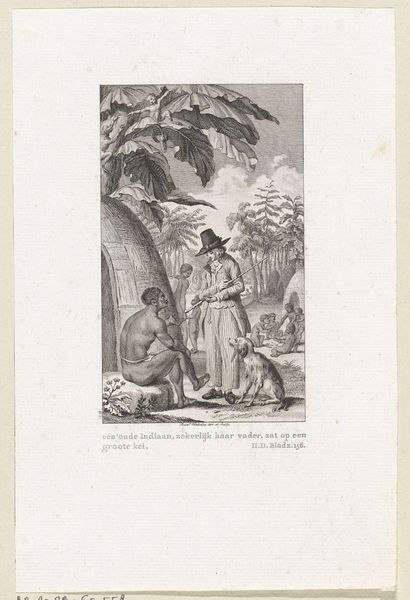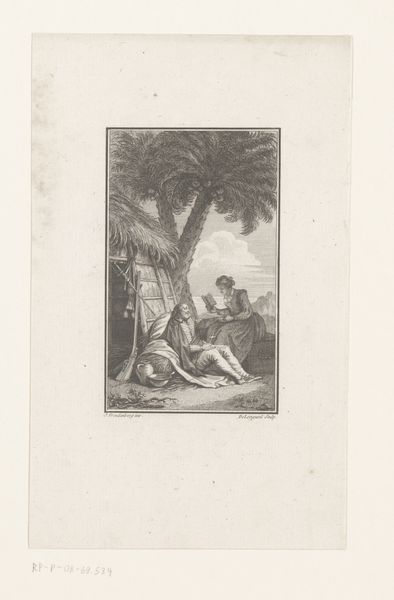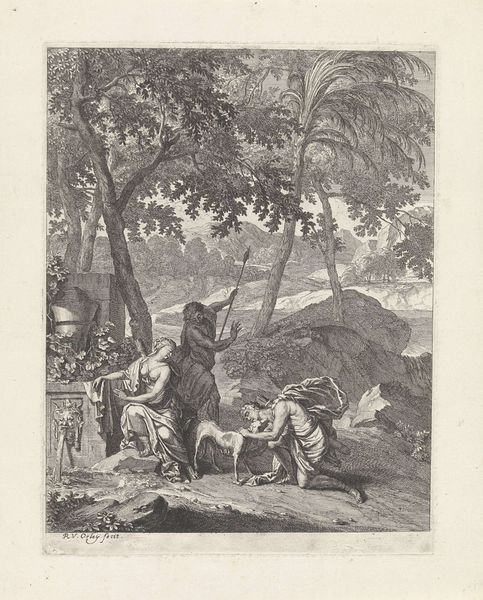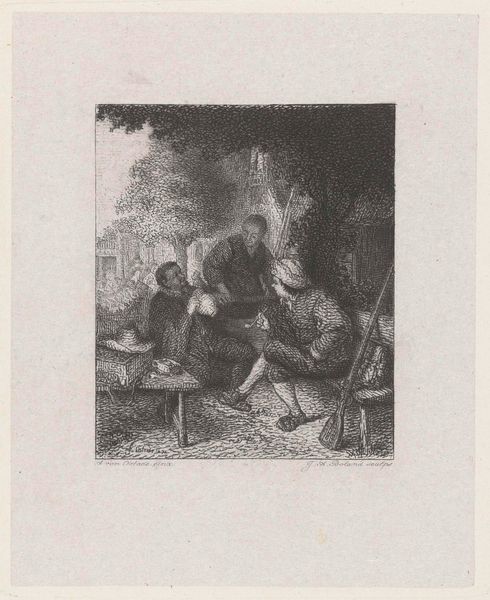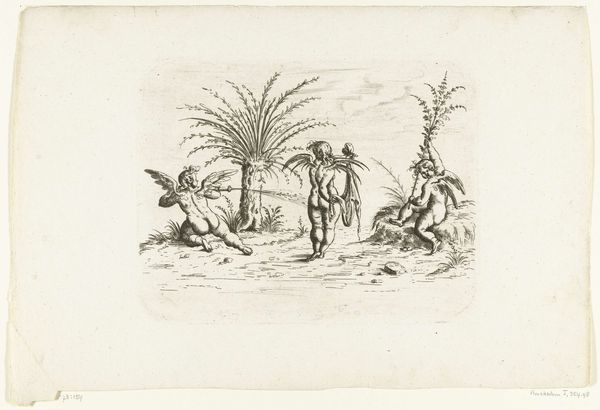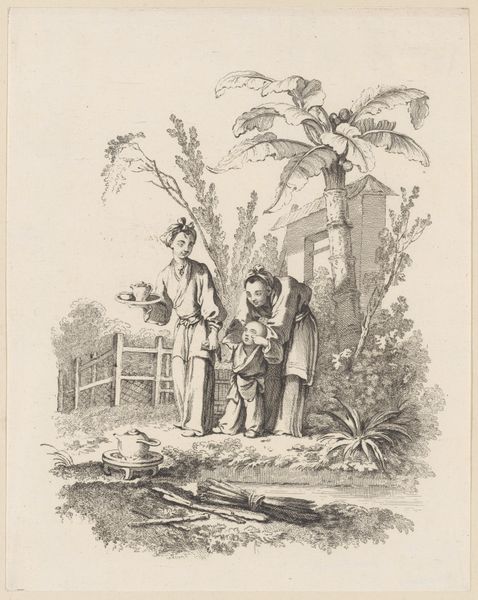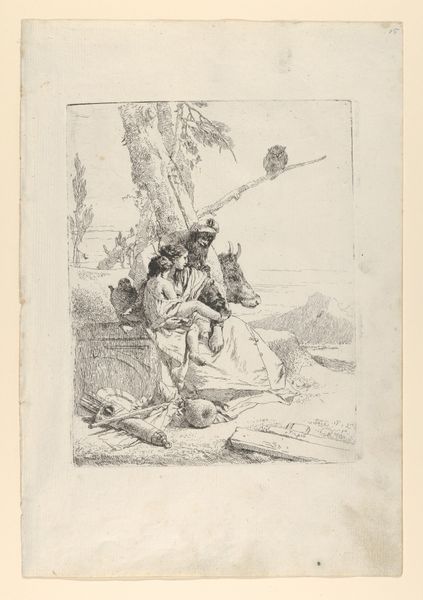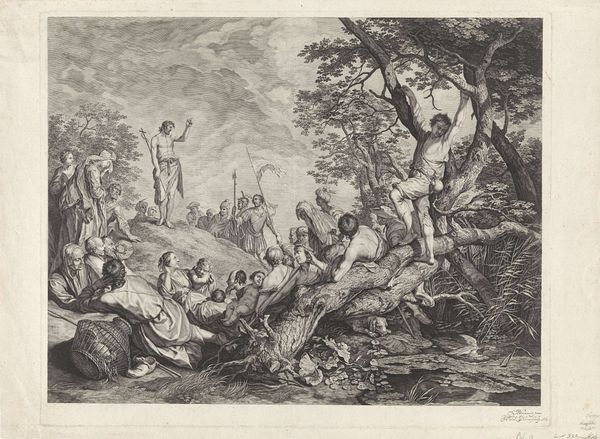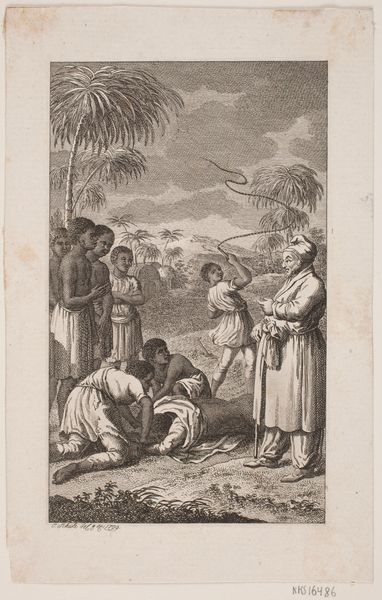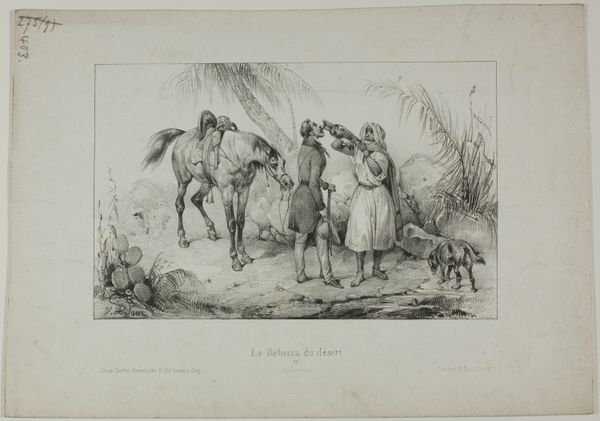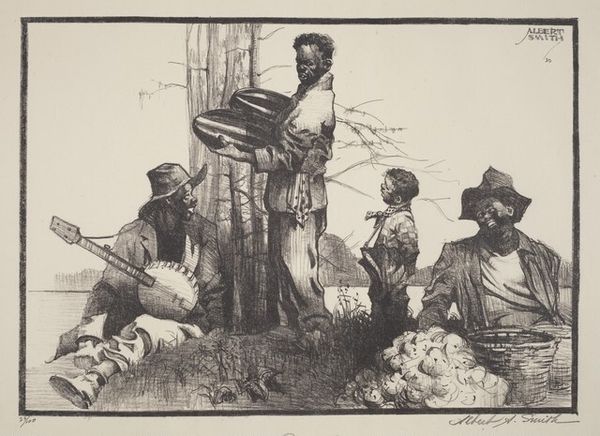
Dimensions: height 156 mm, width 108 mm
Copyright: Rijks Museum: Open Domain
Curator: Let's consider this etching currently displayed in the Rijksmuseum. Created by Adrien Aubry in 1872, it's entitled "Group of Armed Men with a Severed Head on a Pike." Editor: Immediately, the stark contrast catches my eye – the brutal procession practically vibrating against the stillness of the seated woman. The mood is overwhelmingly grim. Curator: Precisely. Aubry's expert handling of the etching technique allows for this stark interplay of light and shadow, highlighting the horror of the impaled head. Notice how the procession is moving right-to-left across the plane, as opposed to the static female figure who grounds the left plane of the composition. Editor: And I'm struck by the very means of production here. The use of etching itself – a laborious, chemical process involving acid and metal – adds another layer of meaning to the work. The starkness feels inherent to the method. Is this realism merely depicted, or born of the process? How can this act of documentation of brutal violence also become art? The physical effort and materials involved in its making, in contrast to the violent immediacy represented within the image... Curator: An astute observation! And think about what materials Aubry is etching into; the metal plates require immense effort and skill to work on. This etching participates in a historical tradition of prints functioning as powerful conveyors of social narratives. What Aubry chooses to include or omit within this limited format creates symbolic weight. The materiality creates the capacity to convey ideas on resistance or violence. Editor: The implied labor involved further complicates the piece, and asks me to question if my very consumption is implicitly violent or not. It pushes one to ponder if the "art world" and its history itself is steeped in exploitation. The social and labor conditions of this piece implicates how we should interpret its social statement today. Curator: The way it frames and formalizes its violent themes elevates a raw story. The organization creates not just information, but an image. We leave feeling deeply uncomfortable, but with an experience borne of artistic craft. Editor: Leaving us to consider both the historical weight of the scene and the ongoing repercussions of its representation.
Comments
No comments
Be the first to comment and join the conversation on the ultimate creative platform.
